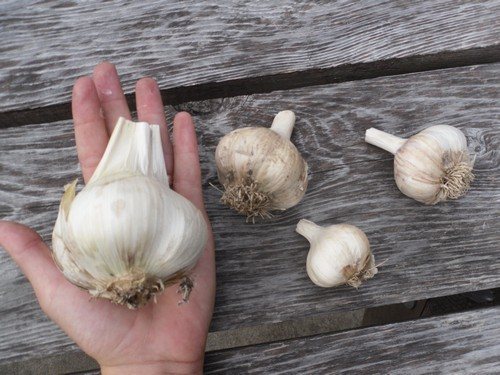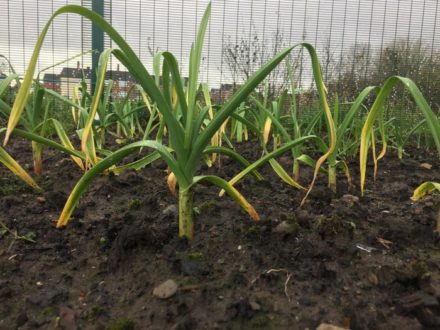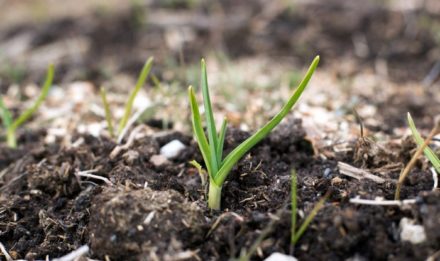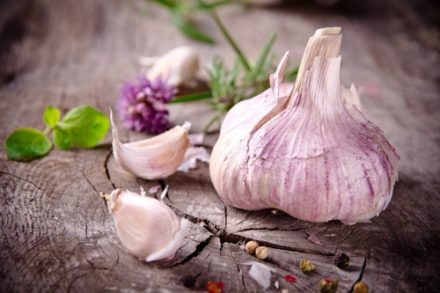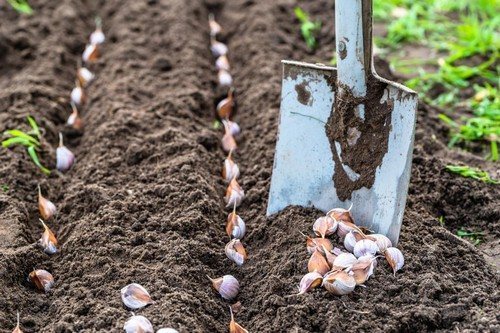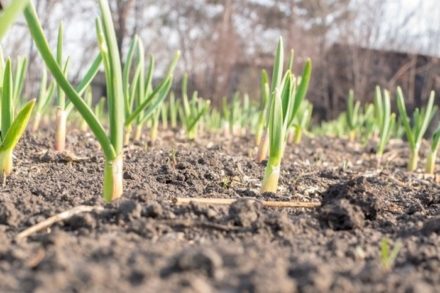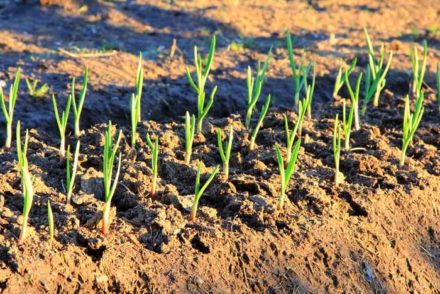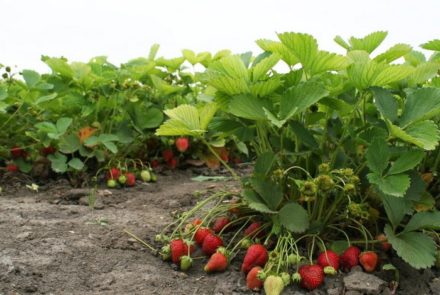Garlic is a storehouse of vitamins and microelements. It is not difficult to grow it yourself, following simple recommendations. To get a rich harvest, it is important to select high-quality seed material for planting, as well as to properly prepare the soil.
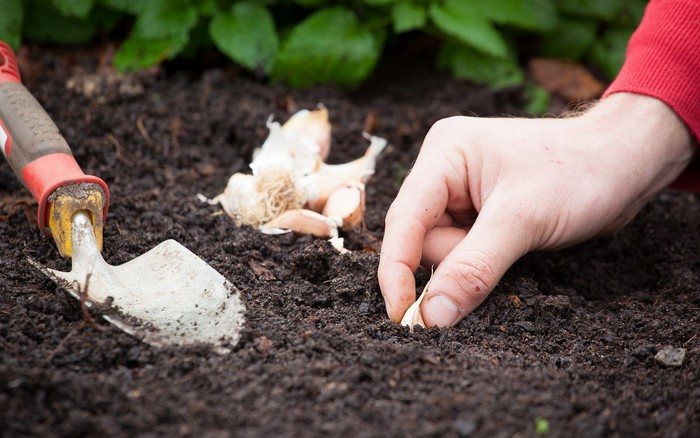
Choosing a landing site
Garlic is a light-loving crop, so when choosing a place for planting, we give preference to an area without trees, tall shrubs or fruit crops. Garlic can be planted both in high beds and directly into the ground. However, it should be taken into account that a low-lying area is not the best option for planting: the accumulation of excess moisture from melting snow and spring rains can lead to damage to the crop.
Processing the bed for planting
Winter garlic must be planted no later than a month before frost so that it can take root well. Garlic grows well in loose, fertile soil. Therefore, before planting it is necessary to prepare the site:
- clear the bed of weeds;
- treat with herbicides against perennial weeds (if necessary);
- dig up (depth - at least twenty centimeters) or loosen (if the soil is soft) a bed;
- add fertilizers and microelements;
- level the area to avoid excess moisture from flowing in;
- disinfect from diseases and pests;
- water the soil.
Preparation should be carried out some time before planting so that the soil is saturated with useful substances and settles a little. If garlic is planted immediately after processing, the cloves may go to a greater depth and shoots will appear much later in the spring.
Fertilizer application
Before completing this step, you need to understand what kind of soil is on the site. If it is clayey, be sure to add raising agents - river sand or peat; if it is sandy, provide frequent watering; if it is too acidic - wood ash or dolomite flour.

All these components normalize the composition of the soil. And to increase its fertility, it is necessary to add humus or compost (organic fertilizers). It is also possible to apply mineral fertilizers - superphosphate and potassium sulfate.
Before autumn planting, nitrogen fertilizers are not applied. They can be used in the spring to feed seedlings.
Disease Control
To prevent fungal diseases of garlic, it is recommended to treat the area with a one percent solution of copper sulfate. The use of other antifungal biological products is also allowed.
Preparing the bed for winter
To be sure that garlic will survive the winter well, the garden bed should be prepared for cold weather. After planting garlic, it is covered with mulch, straw or pine branches, which will help in severe frosts and retain the necessary moisture in the soil.
In order to get a good harvest of garlic, the bed for it should be prepared carefully, the soil should be well fertilized and the soil should be loosened. And then the garlic will reward you with a generous harvest.


